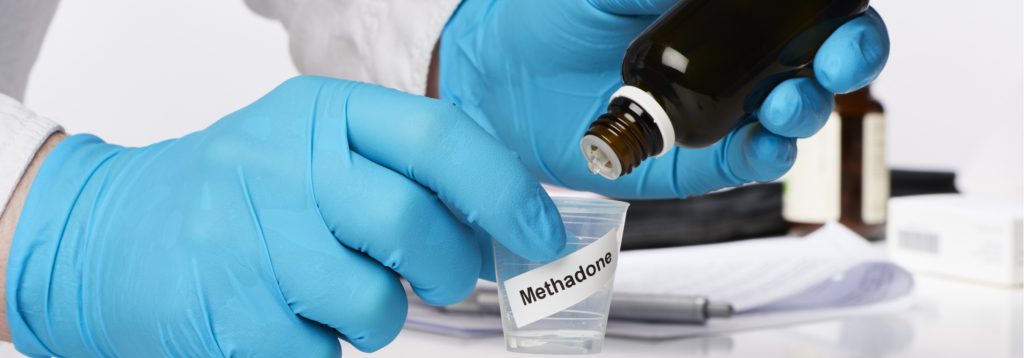Stigma from the Outside
Resistance to new discoveries in medicine, mistaken beliefs that methadone clinics bring crime into communities, and the unquestioning acceptance of current public policy have all contributed to the stigma of medication-assisted treatment.
A Medical Profession at Odds with Itself
In 1967, Dr. Vincent Dole, a metabolic scientist and professor at The Rockefeller University, published an article with Dr. Marie Nyswander suggesting that addiction was an alteration of metabolism — a biological disorder, like diabetes, that would respond to medication.
In the years that followed the publication of Dole and Nyswander’s paper, technological and medical advances gave researchers and clinicians new insights into substance use disorders. Brain imaging techniques, such as MRI and PET scans, have allowed researchers to observe the brain’s response to drugs.
A 2007 article in the journal
Science & Practice Perspectives defined five types of brain imaging.
“The results to date have firmly established that drug addiction is a disease of the brain, causing important derangements in many areas, including pathways affecting reward and cognition,” the authors stated.
Still, many in the medical profession resist the notion of addiction as a disease. Opponents point to an influential 1970s study of Vietnam veterans, conducted by Dr. Lee Robins of the Washington University School of Medicine.
Dr. Robins had been enlisted by Dr. Jerome Jaffe, the head of the Special Action Office on Drug Abuse Prevention under then-President Nixon, to study heroin addiction in American soldiers who’d become dependent on the opioid in Vietnam.
The study revealed that soldiers who had returned from Vietnam addicted to heroin ceased their drug use without any form of treatment. These findings supported the biopsychosocial model of addiction, which attributes addiction to a combination of biological, psychological, and social factors.
In this case, Robins and her team attributed the behavior change to the soldiers’ environment.
Adherents of the biopsychosocial model claim the addiction-as-disease model is “reductionist” — meaning that doctors and scientists who espouse the disease theory essentially reduce the complex problem of addiction to “nothing but a sum of its parts.”
They say the disease model leans too heavily on relationships between addictive behaviors and biological factors as it tries to identify a single cause for addiction.
But supporters of medication-assisted treatment don’t recommend MAT as an alternative to other treatment models. They understand that medication, like detox and inpatient programming, is only part of a full continuum of care and endorse the use of methadone, buprenorphine and naltrexone as supplementary to other treatment methods.
SAMHSA’s TIP 43 cites Dole and Nyswander in its guidelines, which state that opioid addiction can be treated with medication when treatment “includes comprehensive services, such as psychosocial counseling, treatment for co-occurring disorders, medical services, vocational rehabilitation services, and case management services.”
When asked about his work with the Illinois Drug Abuse Advisory Council in Chicago, Jaffe, who’d defended Dr. Robins’ veteran study despite its surprising results, explained that by stripping preconceived notions about a one-size-fits-all approach to treatment, he and his team changed people’s lives.
Jaffe had committed to the advisory council after realizing the city wasn’t providing decent, ethical drug and alcohol treatment.
“We innovated, we did some unprecedented things, we did not see a sharp distinction between methadone and therapeutic communities and detoxification. And because it was not a major battle in my mind, it was not a major battle in the mind of any of the staff who worked for me,” Jaffe said in a 1999
interview published in the journal Addiction. “And people recycled through who couldn’t make it in one situation, they would try another.”
Government and Public Policy Influence Views on MAT
With the passing of the Harrison Act in 1914, the United States government began its descent into the groundless racialization of drug use.
The Harrison Act, passed amid fear-mongering accusations of black, Mexican and Chinese men committing drug-fueled atrocities under the influence of opiates and cocaine, included a clause allowing doctors to prescribe opiates “in the course of his professional practice only.”
But in 1925, Dr. Charles Linder was arrested for prescribing the drugs to substance-dependent patients. The Supreme Court swiftly overturned his conviction, stating that the federal government did not have the right to control medical practices in the states. The Court said the Harrison Act made no mention of people experiencing addiction and that “they [individuals addicted to drugs] are diseased and proper subjects for such treatment ….”
That didn’t stop the federal government from taking a punitive approach to the problem of drug use and addiction, an approach that targeted the destitute and disenfranchised.
The narrative of drug use as a criminal behavior exclusive to
“negro fiends” and “Chinamen” had wormed its way into the American psyche, and discrimination persisted despite the evidence that drug use among black men at the time was lower than among whites.
Naturally, the stigma that surrounded this reviled characterization of addiction was inextricably tied to its treatment.
The current political climate has allowed addiction experts to make inroads with the American people, using decades of research to prove the value of medication-assisted treatment, but they still face many obstacles, including funding, regulatory hurdles and proper education and training.
Prominent social and political figures have expressed their support for MAT and early intervention for at-risk populations, as well as awareness campaigns for prevention and treatment. Chris Christie, Jeb Bush and Carly Fiorina have all shared their personal experiences with addiction in an attempt to chip away at the stigma associated with substance dependence and MAT.
In October 2018, President Trump signed the Support for Patients and Communities Act, which will lift restrictions for prescribers of medications such as methadone and buprenorphine. The passing of this bill is viewed by advocates as progress, but they are calling for more.
NIMBY: Resistance to DTCs in Communities
A study published in the Journal of Studies on Alcohol and Drugs reviewed crime statistics around commercial businesses and drug treatment centers in Baltimore. The study, led by Debra Furr-Holden, of the Bloomberg School of Public Health’s Department of Mental Health, found that violent crime occurred more often near liquor stores and corner stores than around drug treatment centers.
Some people fear that drug treatment centers will bring more crime to their neighborhoods — a fear that leads to opposition that is referred to as NIMBY, or “not in my backyard.”
The truth, however, is that the ability of MAT to help people control their substance use, remain in treatment and avoid relapse has led to to harm reduction in many of these communities.
When residents in Amherst, New York, learned that an opioid treatment program was opening in their community, their main complaint was the lack of transparency.
Treatment program sponsors realized that the best way to stop the stigma in their community was to communicate openly and honestly with the people of Amherst, to assure them that the program would be tightly regulated and provide them with facts to replace the fear of the unknown.
Erie County Health Commissioner Dr. Gale Burstein told Addiction Treatment Forum, “There are a lot of perceived beliefs about the type of person that seeks care at these sites, but we really need to mythbust, we really need to beat stigma, and these types of restrictions are just fueling the fire for these stigmas and these discriminatory attitudes (toward) people suffering from chronic disease.”
 Addiction
Addiction
 Treatment
Treatment
 Faith & Religion
Faith & Religion
 Active Recovery
Active Recovery
 Our Community
Our Community







